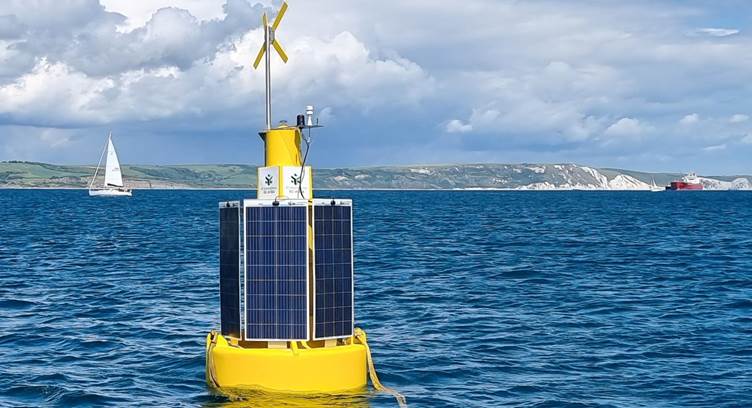JET Engineering System Solutions has deployed its most advanced buoy yet to deliver 5G enabled offshore connectivity and data collection.
JET-4 Babel is a floating 5G base station platform, meaning that it transmits coverage for devices to connect to, increasing the distance from the shore that 5G signal can be established.
Existing 5G infrastructure is limited around the UK coast. Absence of even a simple phone signal has huge safety implications around our shorelines and in the water, not to mention the lack of access to benefits that enhanced connectivity offers businesses and people in those areas. This is usually because mobile networks are focus foremost on providing connections to urban areas with a larger number of users.
Recent research from initiatives like the Dorset Council led 5G RuralDorset project have proven the need for 5G to enable essential safety, environmental, and efficiency considerations for those living and working in rural, coastal, and offshore settings.
JET’s floating network solution extends the capabilities that 5G enables from the shore out into the sea, as well as providing a platform for a multitude of data collection and live streaming to users elsewhere, either as raw data or through a user-friendly dashboard. The unique technology enabling this is hosted on buoys which are deployed exactly where they are required.
This particular deployment demonstrated JET-4 Babel establishing a 5G connection out on the water which JET-3 Arial connected to. Footage from Arial’s subsurface cameras was then streamed in real time back across the network to the team. This proof of concept allows JET to provide the first fully functional floating 5G network at sea, which can extend for miles offshore, providing high bandwidth with high-speed delivery across significant distances.
The deployment of Babel was supported by funding from DCMS via the 5G RuralDorset project, with which JET also collaborated on its previous deployment of Arial.
The technology on board Babel was rapidly scaled to meet the demand of the offshore wind sector, including the creation of the base station platform which has enabled this major milestone in JET’s route to market. These developments were funded by the Offshore Wind Growth Partnership (OWGP) and further supported by the Offshore Renewable Energy (ORE) Catapult’s Launch Academy.
The JET team has also been fortunate to have participated in the Net Zero Technology Centre’s TechX Clean Energy Accelerator programme which has aided significant business growth.
James Thomas, CEO at JET Engineering
I am incredibly proud of the JET team for the world leading work they have done to make 5G at sea a reality. Having founded the company in 2020 we have been limited to doing a lot of development work remotely, and this deployment brought the perfect opportunity to bring the team together on the boat to see the buoy launched. Watching the buoy-to-buoy communications with real time camera feeds was a great moment for us.




















